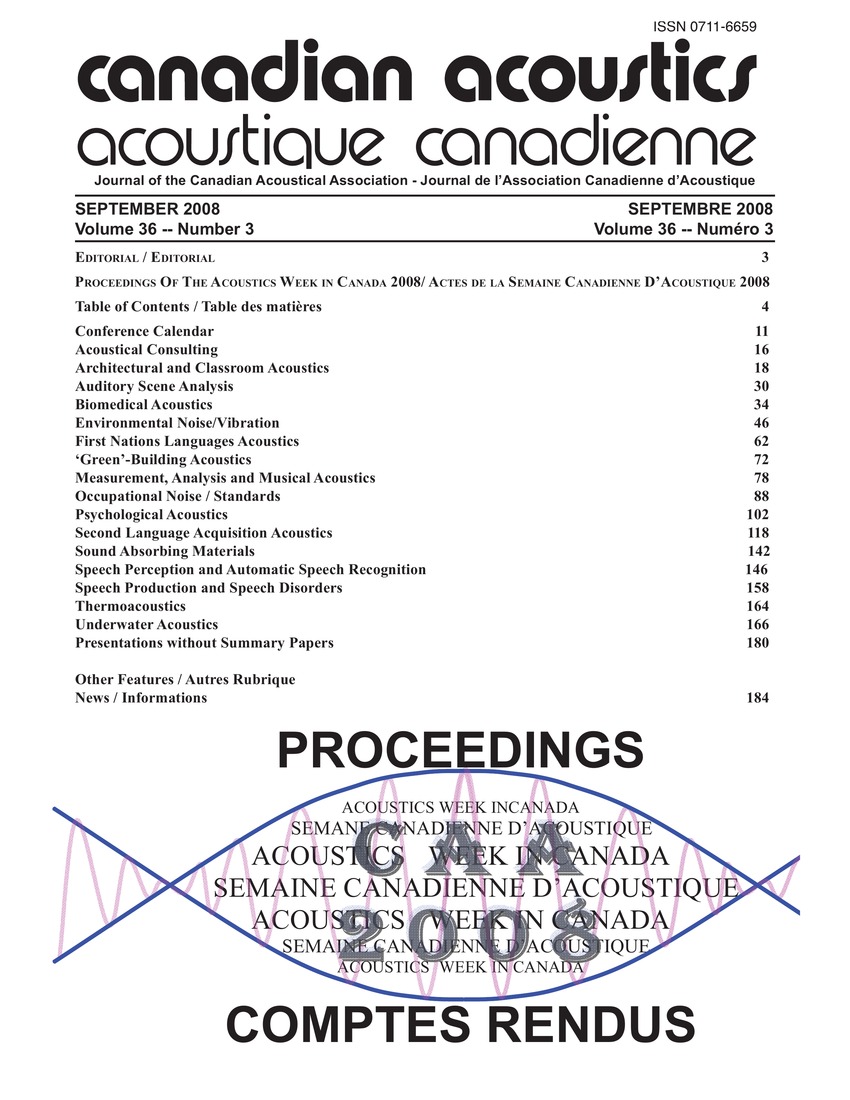Statistical analysis of classroom questionnaires and acoustical parameters
Keywords:
Acoustic noise, Acoustics, Architectural acoustics, Reverberation, Students, Surveys, Acoustical parameters, Background noises, Demographic informations, Early decay times, Late energies, Physical measurements, Reverberation times, Statistical analysisAbstract
A study was conducted to investigate the relationship between the physical-acoustical attributes of a classroom and its mean Perceived Listening Ease (PLE) score. The study used a PLE questionnaire to calculate PLE score from the responses. The average PLE score can be used to determine the objective quality of the classroom and performance of classrooms. The questionnaires were distributed to students and physical measurement was carried out in the classrooms. The questionnaire had 73 questions divided into three sections. The questionnaire were used to determine the demographic information of the student and student's evaluation of the listening environment in the classrooms. The background noise level (BNL), early decay time (EDT), reverberation time, and early-late energy fraction were also measured for the study.Additional Files
Published
How to Cite
Issue
Section
License
Author Licensing Addendum
This Licensing Addendum ("Addendum") is entered into between the undersigned Author(s) and Canadian Acoustics journal published by the Canadian Acoustical Association (hereinafter referred to as the "Publisher"). The Author(s) and the Publisher agree as follows:
-
Retained Rights: The Author(s) retain(s) the following rights:
- The right to reproduce, distribute, and publicly display the Work on the Author's personal website or the website of the Author's institution.
- The right to use the Work in the Author's teaching activities and presentations.
- The right to include the Work in a compilation for the Author's personal use, not for sale.
-
Grant of License: The Author(s) grant(s) to the Publisher a worldwide exclusive license to publish, reproduce, distribute, and display the Work in Canadian Acoustics and any other formats and media deemed appropriate by the Publisher.
-
Attribution: The Publisher agrees to include proper attribution to the Author(s) in all publications and reproductions of the Work.
-
No Conflict: This Addendum is intended to be in harmony with, and not in conflict with, the terms and conditions of the original agreement entered into between the Author(s) and the Publisher.
-
Copyright Clause: Copyright on articles is held by the Author(s). The corresponding Author has the right to grant on behalf of all Authors and does grant on behalf of all Authors, a worldwide exclusive license to the Publisher and its licensees in perpetuity, in all forms, formats, and media (whether known now or created in the future), including but not limited to the rights to publish, reproduce, distribute, display, store, translate, create adaptations, reprints, include within collections, and create summaries, extracts, and/or abstracts of the Contribution.


